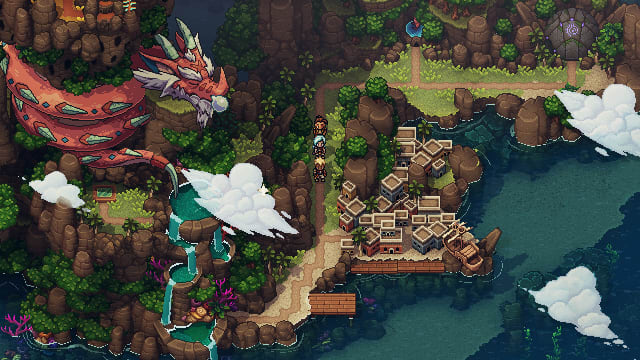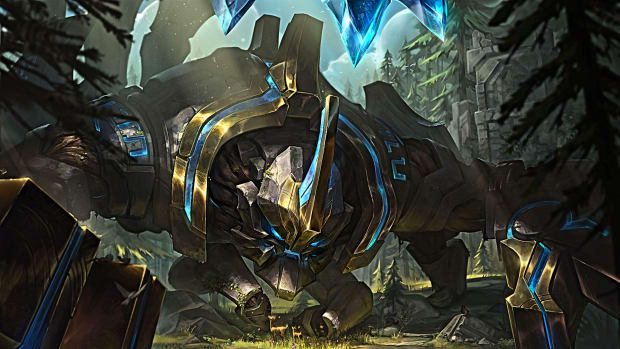
Open Roads is one of the most thoughtfully designed games I've seen
Open Roads, the upcoming road trip indie game from Annapurna Interactive, ran over plenty of potholes along its journey, even changing development teams halfway through production. Its destination – a February launch date – is finally coming into view, though, and I recently had the chance to see 30 minutes of Open Roads at a preview event. While such a brief segment can’t show you much about a game, it did give me a glimpse of what makes Open Roads special – its thoughtfully designed settings and exceptional attention to detail.
I also spoke with art director Noël Clark and graphic artist Harrison Gerard about how they and their teams gave life to Open Roads’ unique visual style.
The story opens with Tess (Kaitlyn Dever) and her mother Opal (Keri Russell) packing for a move. It’s not a willing move, though. The pair cared for Opal’s mother Helen as her health declined – and without any help from other family – and now, Helen’s house is getting sold out from under them.
Like the best adventure games, Open Roads places mysteries and opportunity at your feet and lets you navigate them in your own way – or not. Ignoring red flags, conversations, and clues is a valid option and sometimes a smart one. In one scene I viewed, Tess tried asking her mother about a piece of broken wedding China that belonged to Helen, Tess’ grandmother. Someone mended the plate after it broke, but Opal grew agitated and evasive when Tess pressed her for answers.
Opal herself isn’t just someone for Tess to speak with or a plot device for a big, emotional mystery. Games like Open Roads, including Hotel Dusk, put their protagonist first. Their fallacies and foibles shape how you see their world, but in Open Roads, Opal is an important part of helping Tess understand her world and family. If she’s present, she’ll comment on items you find, add new perspectives, or even chastise you in a most mom-like fashion if you break the rules – leaving the fridge door open, for example.

Open Roads' exquisitely detailed models give it a fresh, realistic perspective
The Open Roads Team/Annapurna Interactive
Hints of family secrets abound in these and other interactions, there’s probably a treasure hunt in the future, and a dark and dangerous situation or two are more than likely waiting over the horizon. I’m more interested at this point in Tess, Opal, and their relationship with each other than I am in the broader narrative arc, though that’s likely a consequence of seeing just 20 minutes or so of the actual story.
However Open Roads’ narrative unfolds, the settings are a remarkable achievement. Clark tells me the team looked to Hotel Dusk, Cing’s classic Nintendo DS adventure game, as a general starting point, but the project absorbed dozens of inspirations during development and ended up with something completely new – fully 3D environments and stylized 2D characters. While the Steam page presents this approach as groundbreaking, the Open Roads team also pursued it for practical reasons.
Gerard and Clark say 2D models give artists more room for creating emotional depth and avoid what Gerard calls the “uncanny valley” effect you often see on 3D models that aren’t quite expressive enough. It’s hard not to agree with that take. Even Baldur’s Gate 3’s impressively detailed character models would occasionally stray into the ridiculous with their reactions and expressions.
Inspiration for the 2000s setting came from several places. Younger team members, including graphic artist Harrison Gerard, had to research it as a time period with a specific material culture, which made me, a ‘90s kid, come dangerously close to vanishing in a puff of ancient dust. Art director Noël Clark and others who were teenagers around 2003 added pieces of their memories to Open Roads, though, lending a greater sense of believability to everything.
The strength of this approach isn’t just that you see a specific kind of eraser no one uses anymore or a bulky, translucent computer monitor with a pink back plate. That would be easy and, frankly, cheap nostalgia bait. It’s that you see them used, examined, positioned, and spoken of in ways that seem completely natural, like 20 years haven’t passed since then. It's a small feature that influences how you feel and think about Open Roads’ world and characters in bigger ways than you might expect.
The same is true for the rest of Open Roads. While we didn’t see Open Roads’ second main setting in the preview, an old family cabin, Clark tells me it never moved on from the 1960s when Opal’s family first decorated it. The team used a similar approach for it as they did for the family home, though, naturally, had to rely more on research. Clark added personal touches from her grandmother’s house to give it a more genuine lived-in look, while Gerard visited a local library and dove into design catalogues from the period to deepen his understanding of how a home-like setting would feel at the time.
Accuracy and good design sense go a long way toward making settings feel believable, but what really stood out to me was the level of detail. The kind of scalloped molding over a doorway that you often see in older homes; the stamp on a library book and that thin rustling sound you get from opening the cover and brushing your hand across the chunky card with the barcode on it; even a scribble on the wall in a closet that one of the team’s children drew, that you can completely miss unless you’re exploring.
Few settings feel as lived in and realistic as the ones I saw in Open Roads. Whether Tess and Opal’s story eventually outshines the world they inhabit remains to be seen, but I’m eager to see how these lived-in spaces help tell that narrative as their journey progresses.
Open Roads launches for PS5, PS4, Xbox One, Xbox Series X|S, Nintendo Switch, and PC via Steam on Feb. 22, 2024.






